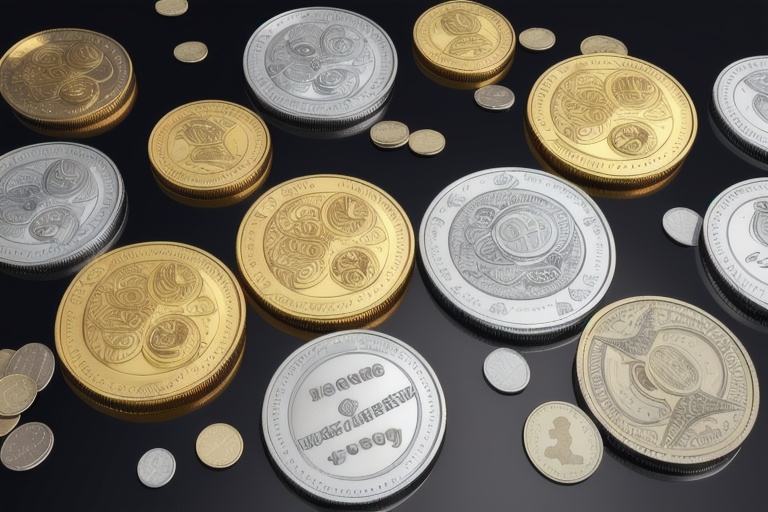Venturing into the realm of Indian coin collecting offers a fascinating blend of historical intrigue and artistic appreciation. This hobby subjects enthusiasts to the multitude of stories each coin encapsulates regarding India's rich cultural tapestry. From the earliest punch-marked denominations of the subcontinent to the intricate designs of the Mughal era, and the sovereign coins of the British Raj, the journey through Indian numismatics is as diverse as it is enthralling.
Venturing into the realm of Indian coin collecting offers a fascinating blend of historical intrigue and artistic appreciation. This hobby subjects enthusiasts to the multitude of stories each coin encapsulates regarding India's rich cultural tapestry. From the earliest punch-marked denominations of the subcontinent to the intricate designs of the Mughal era, and the sovereign coins of the British Raj, the journey through Indian numismatics is as diverse as it is enthralling.
Introduction to Indian Coin Collecting
Among the sought-after collectibles are the coins issued during the British colonial period, known for their refined engravings of monarchs like Queen Victoria and King George V. Available in denominations such as pice, annas, and rupees, these coins are not only a window into colonial India but also a testament to the art of minting during the era.
Take, for example, a half pice coin from 1939, discovered in an uncirculated condition. Its copper craftsmanship would not only elevate its historical value but potentially enhance its market price, given its pristine preservation. Understanding the true worth of such coins necessitates a solid grasp of coin grading standards, established by trusted authorities such as PCGS (Professional Coin Grading Service), NGC (Numismatic Guaranty Corporation), and ANACS (American Numismatic Association Certification Service). These grading benchmarks assist in ascertaining the quality and consequently, the value of a coin.
The Expanse of Indian Numismatics
Yet, the British Indian coins represent merely a fraction of the numismatic spectrum. Coins from the Mughal period are adorned with exquisite detailing and were primarily struck in metals like gold, silver, and copper. Independent princely states likewise produced their unique series of coins, each mirroring the individuality and customs of their dominions.
Examining the constitution of Indian coins is paramount. The presence of precious metals or common alloys such as copper-nickel or bronze can considerably sway a coin's monetary worth, especially for pieces that are scarce or highly coveted.
Furthermore, comprehending the coins' background—the emperors who commissioned them, the mints of origin, illustrated motifs and symbols—heightens the collector's esteem for these artifacts. This insight not only enriches one's reverence for their legacy but also bolsters the potency of valuation.
The Thrill of Mixed Lots
As one delves deeper into this avocation, encountering mixed coin lots presents an invaluable panorama into the varying denominations and regimes that shaped India's history. Such collections provide a broad stroke of the numismatic canvas, offering a rich array of specimens for study and enjoyment.
For neophytes in the realm of coin collecting, it's advisable to initiate the pursuit with more affordable items. This mitigates financial risk while allowing budding collectors to acquaint themselves with the nuances of numismatic valuation. Gradually, as one's proficiency and confidence flourish, the acquisition of rarer and more illustrious specimens becomes a natural progression.
Beyond Monetary Value
It's important to recognize that coin collection transcends the tangible metric of value—it's a homage to history and a statement of cultural wealth. Each addition to a collector's repertoire contributes to the preservation of India's numismatic legacy. Collectors often revel not merely in the economic potential of their coins but in the sheer allure and the narratives they embody.
Anticipate further exploration of the intricacies of Indian coin categories, their valuation, and how to cultivate a comprehensive numismatic collection in subsequent articles. This journey is designed to offer budding and veteran collectors alike richer insights into the captivating domain of Indian coin collecting and valuation.
Embarking on this numismatic adventure into Indian coins is an investment in a collecting experience rich with heritage and vibrancy. Indian coinage spans a vast array of eras and empires, each offering their unique characteristics and insights into the country's diverse history. It is an arena ripe for exploration and discovery.
Always keep in mind, as with all collecting endeavors, the need to approach the hobby with a sense of due diligence. Ensuring the authenticity of coins, engaging with reputable dealers, and staying informed about the market are all part of making informed and rewarding collecting decisions.
Consider this as an invitation to the world of Indian coin collecting—a tradition that celebrates the intersection of history, culture, and artistry. Whether you're captivated by the gleam of a Mughal gold coin or the patina of a British Imperial rupee, the pleasure derived from Indian numismatics is boundless.
In essence, Indian coins are more than just monetary instruments; they're artifacts of time that beckon us to delve deeper into the annals of Indian history. As we look forward to unearthing specific categories of Indian coins, their valuation, and the joy of compiling a well-rounded collection, we welcome everyone—regardless of their level of expertise—to partake in the fulfilling pastime of coin collecting. Stay tuned for richer perspectives that will enhance your numismatic journey.
Information for this article was gathered from the following source.




